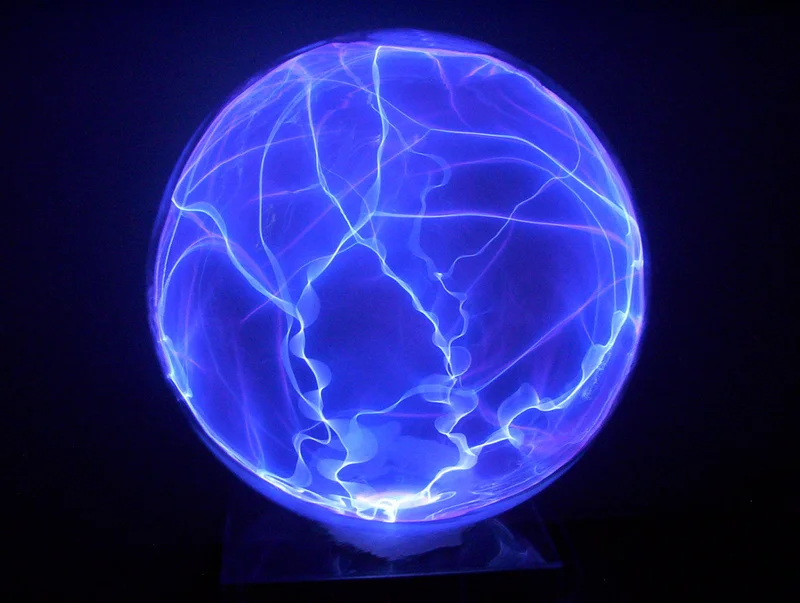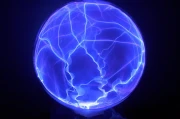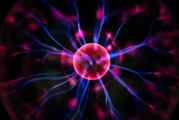The Sub-$1 Hydrogen Promise: Deconstructing the AI-Driven Breakthrough The...
2025-10-05 12 Plasma
Let’s get one thing straight. The word "plasma" has officially lost all meaning. It's become a catch-all for anything that sounds vaguely futuristic and important. Is it the stuff in your blood they keep trying to buy from you in strip malls? Is it the fuel for a man-made star that's always ten years away? Or is it the name of the latest crypto network where degens are flipping meme coins named after… a viral video clip?
The answer, ridiculously, is yes. All of it. And I'm exhausted.
The Version in the Sky
Just the other night, people in Wyoming were losing their minds over the aurora. And fair enough, it’s a cool sight. But then this other thing showed up. A brilliant, searingly bright streak of light. Andrea Cook in Clark, Wyoming, called it "unholy bright." Gary Anderson, over by Casper, said it looked like a "tornado, twisting in the sky."
This thing, they tell us, is a STEVE. Which, in the grand tradition of scientists trying to sound cool after the fact, is a backronym for Strong Thermal Emission Velocity Enhancement. In other words, a 5,430-degree ribbon of hot plasma. See? Plasma.
This particular plasma is a mystery. It shows up with auroras but it isn't an aurora. It's hotter, it moves differently, and nobody really knows where it comes from. It's a genuine cosmic puzzle, a beautiful and fleeting spectacle that can vanish in minutes. Cook barely got a photo before it was gone. Anderson and his friend got lucky and watched it for half an hour. It’s raw, unexplained, and powerful.
So, offcourse, we had to give it a dumb name and file it under the same buzzword we use for everything else.
The Version in the Machine
Then you’ve got the other plasma. The one that’s supposed to save the world. I’m talking about nuclear fusion, the holy grail of clean energy. Inside these doughnut-shaped machines called tokamaks, scientists are trying to control plasma—the same state of matter as the sun—to generate power.
The problem is, this stuff is wildly unstable. So now they’re bringing in AI to help. Some new system called Diag2Diag, which sounds like a terrible 90s tech startup. The lead author of the paper, Azarakhsh Jalalvand, says, "We have found a way to take the data from a bunch of sensors... and generate a synthetic version of the data for a different kind of sensor."

Let me translate that for you: "Our sensors can't keep up, so we built an AI to guess what the missing data should look like."
This is a bad idea. No, 'bad' doesn't cover it—this is a five-alarm dumpster fire of a concept when you're dealing with a miniature sun. They’re talking about how this will make future fusion plants reliable "24/7, without interruption," but in the same breath, they're admitting they need an algorithm to fill in the blanks because their hardware isn't good enough. It feels less like a breakthrough and more like putting digital duct tape on a reactor.
And you can't escape the word. Every time I drive down the freeway I see another one of those glaring signs. "Donate Plasma, Save a Life!" Or just "CSL Plasma." Or "Biolife." Or "Grifols Plasma." An entire industry built around paying people pennies for the plasma in blood. You start to wonder what is plasma function anyway, besides making some faceless corporation a tidy profit. It’s just another resource to be extracted, packaged, and sold. The word is everywhere, and it's always about something just out of reach.
The Version in the Wallet
And that brings us to the most cynical version of all: crypto.
Of course there’s a blockchain called Plasma. Of course its token, XPL, is rocketing because a bunch of whales decided it should. And of course, the big story on this network—a network supposedly "optimized for stablecoin transactions"—is a meme coin called "Trillions."
It’s based on a clip of some venture capitalist saying stablecoins could create "trillions of dollars of demand." The Plasma team reposted it, it went viral, and a meme was born. Now a token based on that meme, on that network, briefly hit a $60 million market cap before crashing. This ain't an ecosystem; it's a casino built on inside jokes.
They throw around terms like "mainnet beta" and "permissionless blockchain" and expect everyone to just nod along, but really... what are we even talking about? A whale makes $80 million in a few days by pumping the price, and retail traders pile in hoping for scraps. It’s the same old story, just wrapped in a new, science-y sounding brand name. Plasma. It sounds so clean, so fundamental. It’s the perfect camouflage for another get-rich-quick scheme.
Then again, maybe I'm the crazy one here. Maybe this is just how the world works now. A mysterious ribbon of light, a world-saving energy source, and a pump-and-dump meme coin are all just… plasma.
In the end, it doesn't matter if it's in the sky, in a reactor, or in a crypto wallet. Calling it "plasma" is a marketing trick. It’s a way to lend an air of scientific legitimacy and futuristic hope to things that are either completely baffling, terrifyingly complex, or utterly pointless. It’s the ultimate buzzword, a hollow term used to sell us on a future that never quite arrives. It's all just noise, and I'm tired of listening.
Reference article source:
Tags: Plasma
Related Articles

The Sub-$1 Hydrogen Promise: Deconstructing the AI-Driven Breakthrough The...
2025-10-05 12 Plasma

The word “plasma” appeared in four distinct contexts in my feed over the la...
2025-10-01 20 Plasma